|
|||||
The first rule is, if they show up in a pet shop they're easy. So call your local pet store. Ask them if they have killifish. If they do, buy them, if they don't ask them to get some. Anything. Then call every other pet shop within a days train ride and say the same thing. If nothing else it will encourage stores i your area to order killifish, maybe somebody else will get the "bug" too.
What you'll find are things like:
Any Aplocheilus. The A. dayi "green panchax" are especially nice.
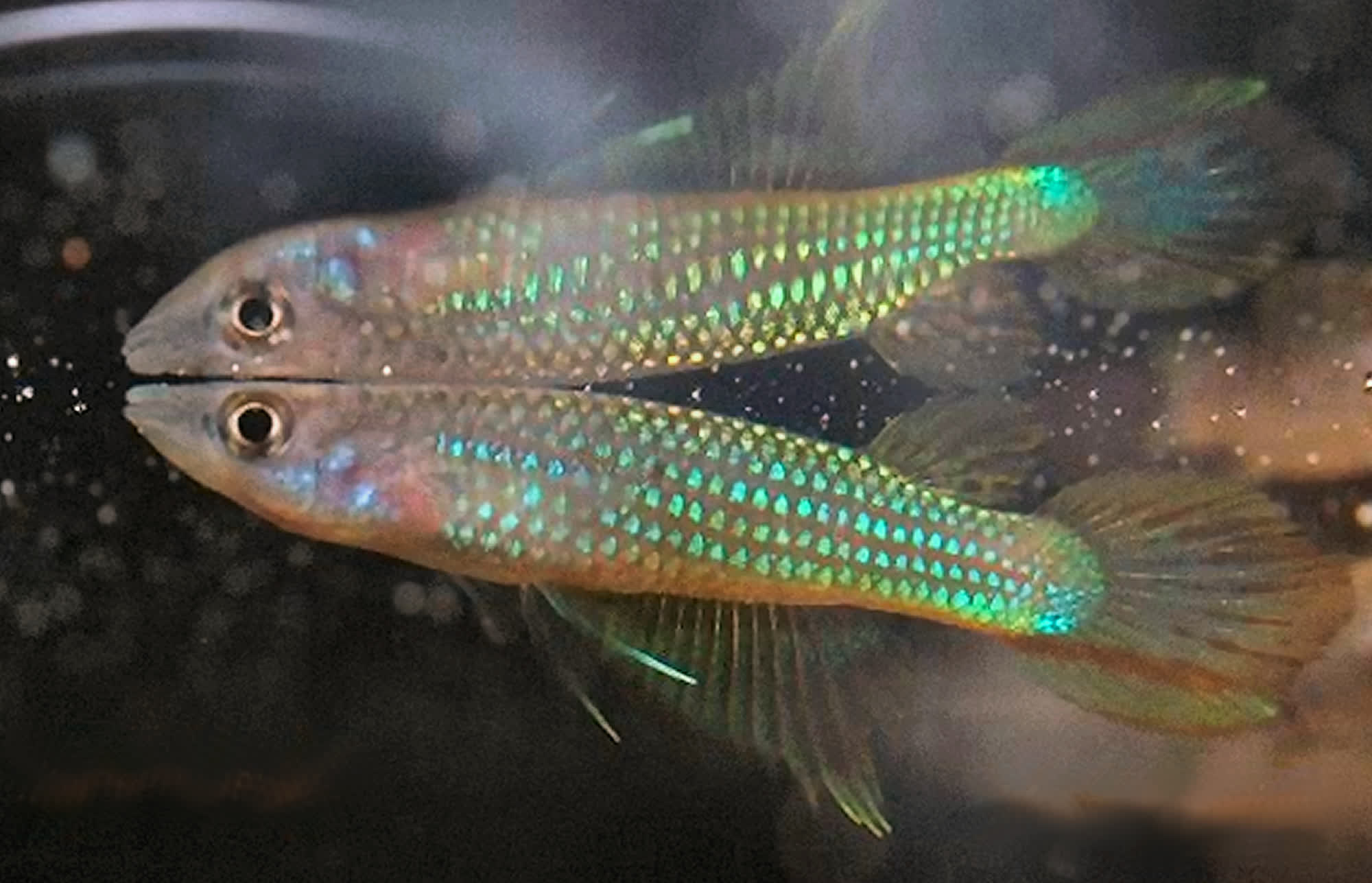 |
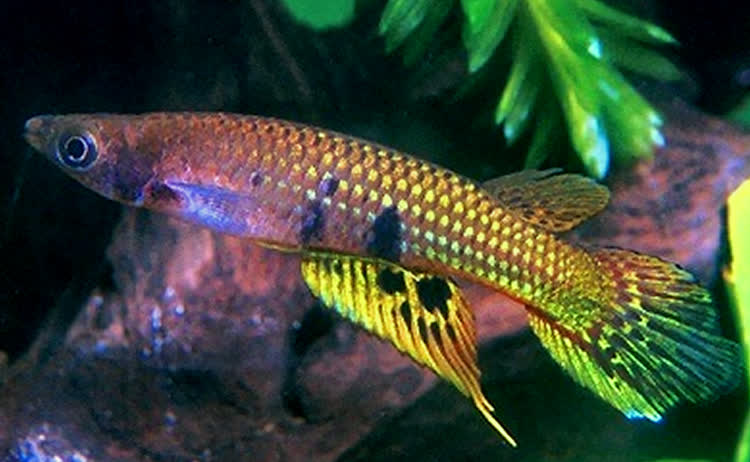 |
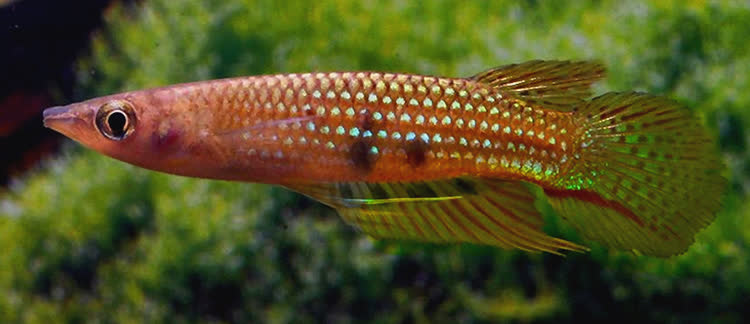 |
The three small ones A. blocki, A. parva and A. kirchmayer are especially good for small tanks.
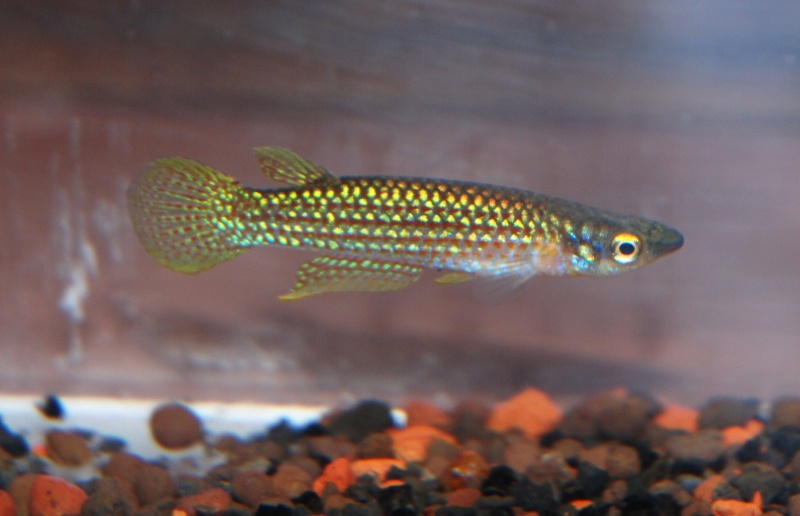 Aplocheilus blocki |
 Aplocheilus parva |
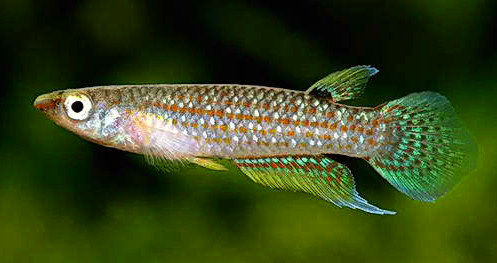 Aplocheilus kirchmayeri |
A lineatus is best for large tanks, it gers 4" long.
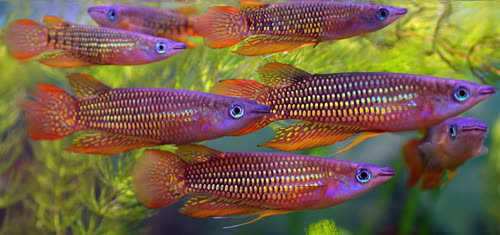 Red (Uncommon) |
 "Golden Wonder" (Yellow) |
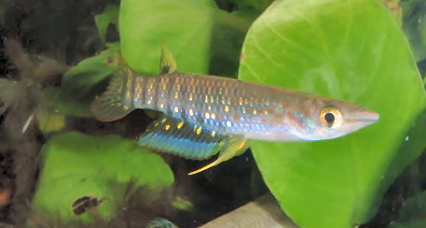 Blue (Very Rare) |
A. panchax has fins that come in white, yellow, red, orange and blue no color is particularly rare.
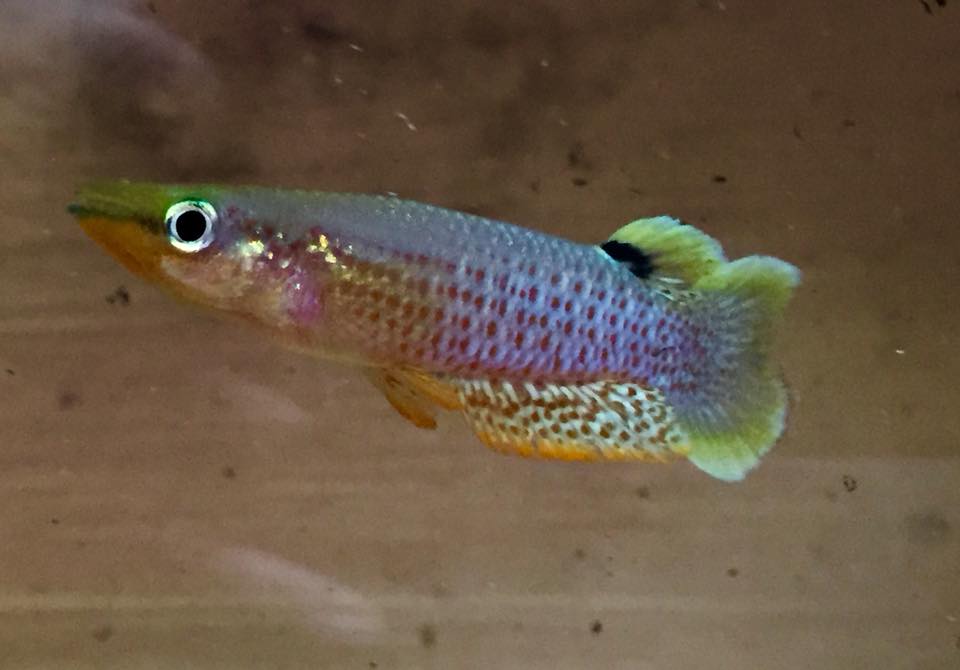 |
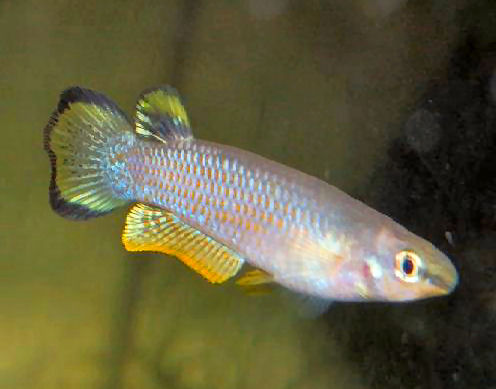 |
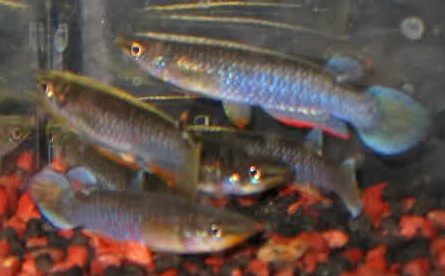 |
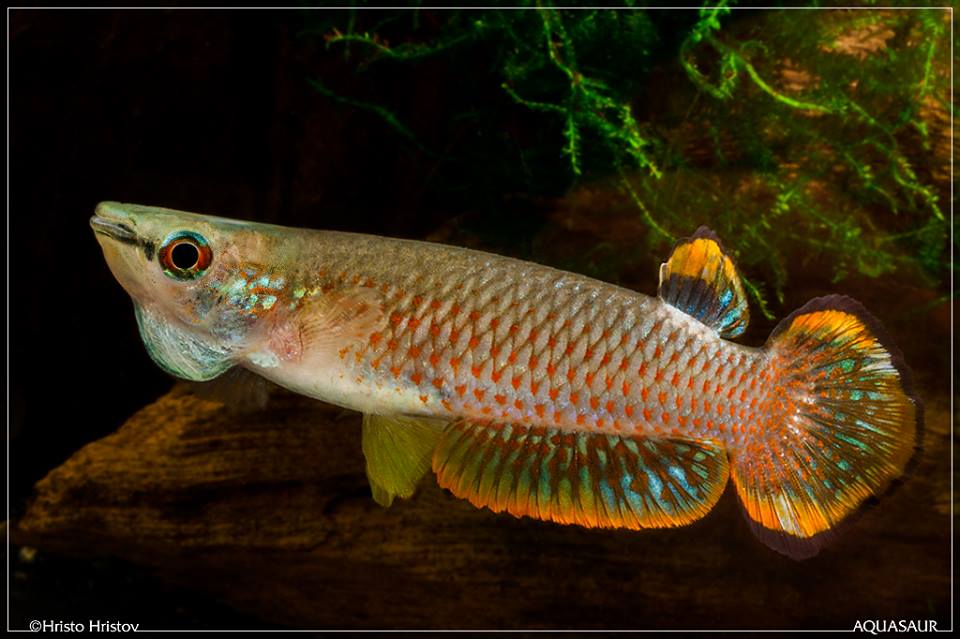 |
Lampeyes are not like other killies that are secretive fish that hide a lot. Instead these act more like neons. Poropnchax normani an inch long flash of blue is the one most commonly found in stores.
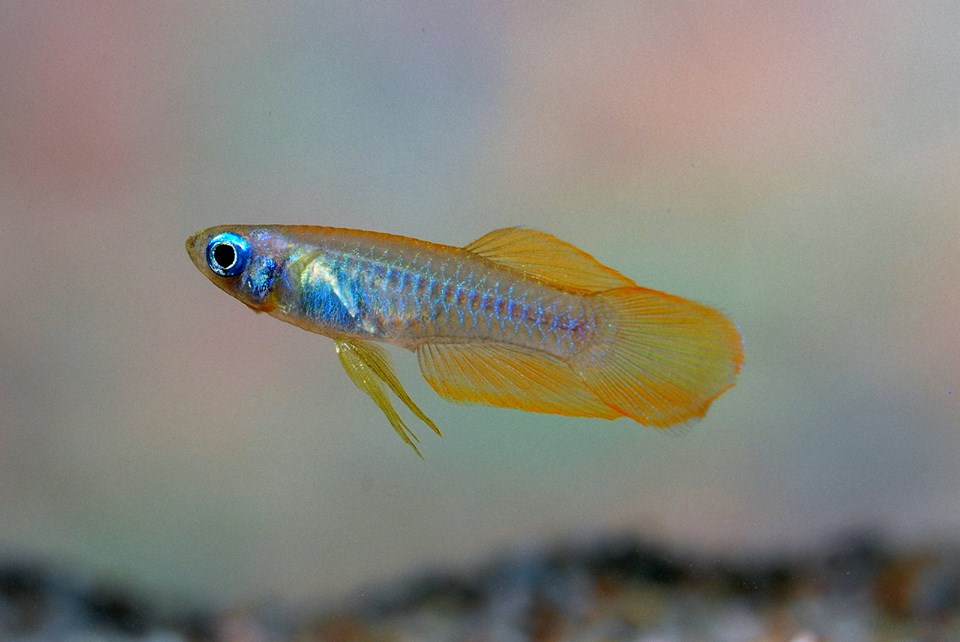 |
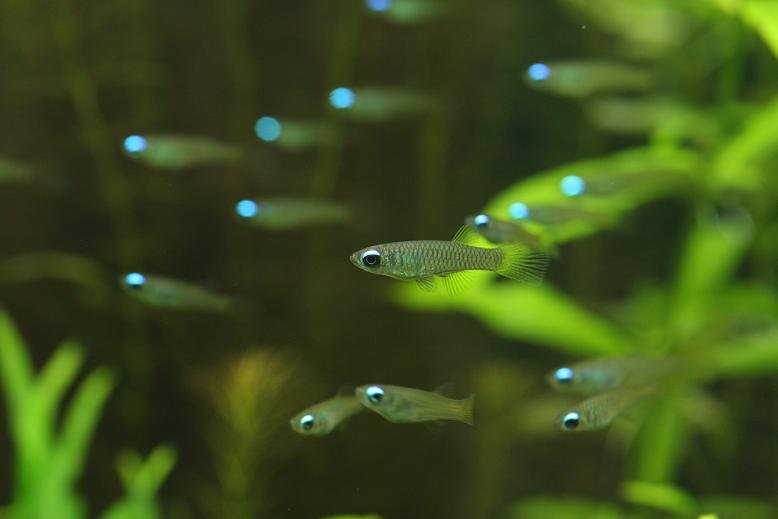 ) ) |
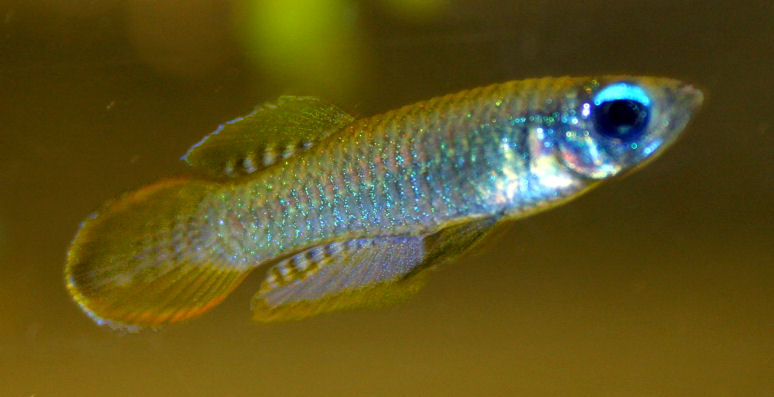 |
Oddly, lampeyes are one of the killies that show up more in stores than in killi hobbyists tank. Get any kind you can; unlike more well known types these require large tanks with fast flowing well oxygenated watr and behave more like sardines than you would expect a killifish to. They are notoriously difficult to ship so be very very careful taking them home. The larger they are both as a species and an individual fish, the harder they are to transport. One you get them in a tank they are however a robust and hardy very active species a a joy to behold. Pehaps not the best beginners fish, unless you were a very confident beginner.
 Lamprichthys tanganicanus 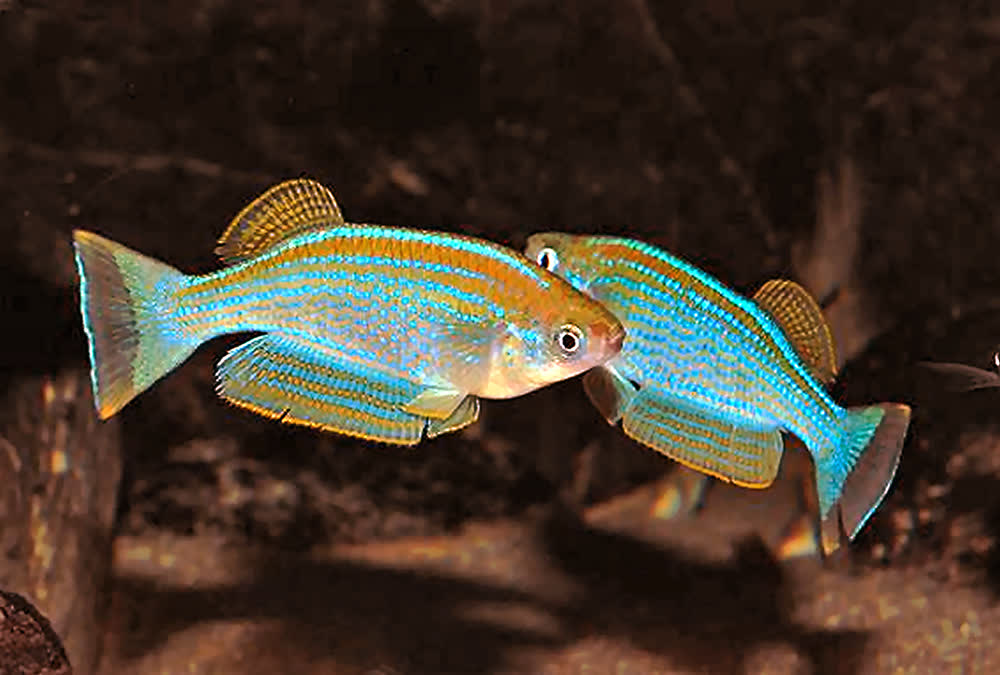 These get big. |
 Procatopus aberrans 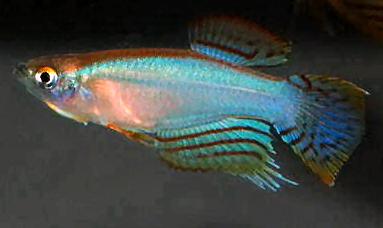 Procatopus nototaenia "Fifinda" |
 Plataplochilus ngaensis 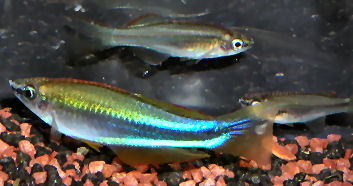 |
Ps. annulatus shows up a lot these days. E. dageti may be found too, these are both ideal.
 E.dageti |
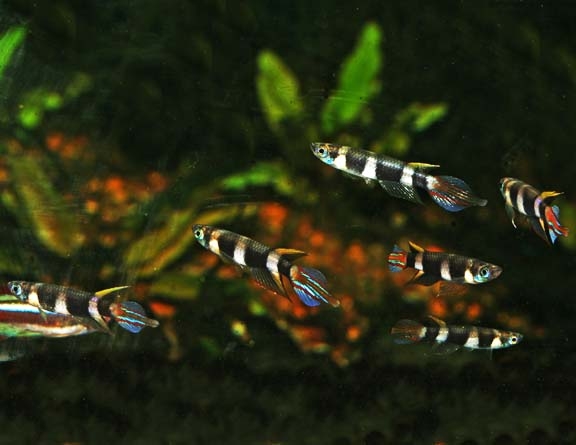 Ps. annulatus |
Florida flag fish can usually be found. They breed more like cichlids just to confuse things - after spawnig in a gravel pit the make guards the eggs. No other killifish does this.
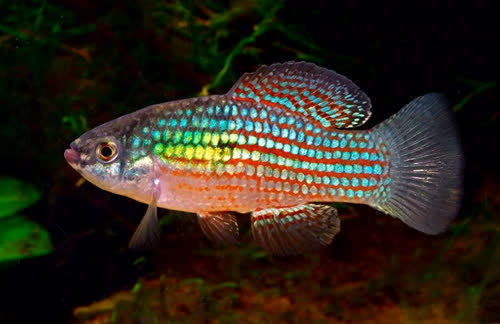 |
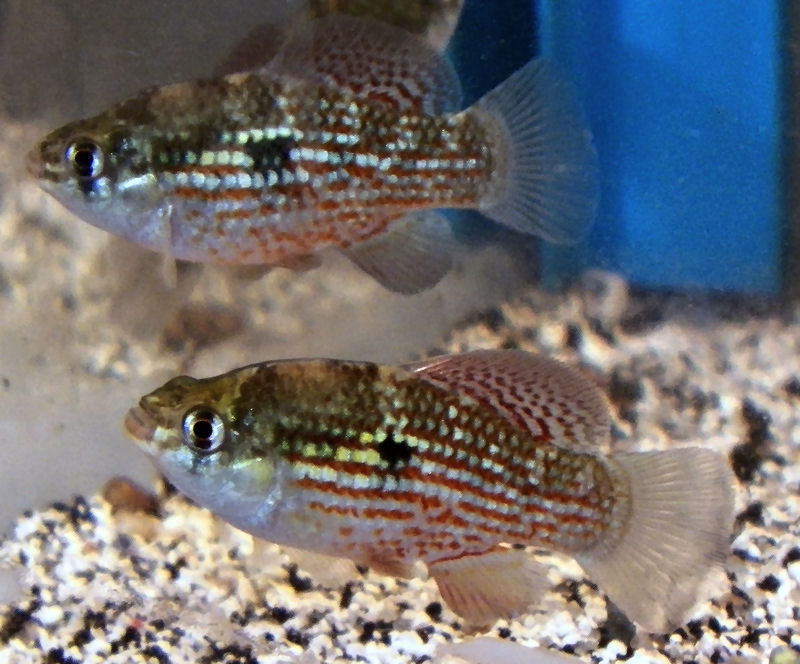 ) ) |
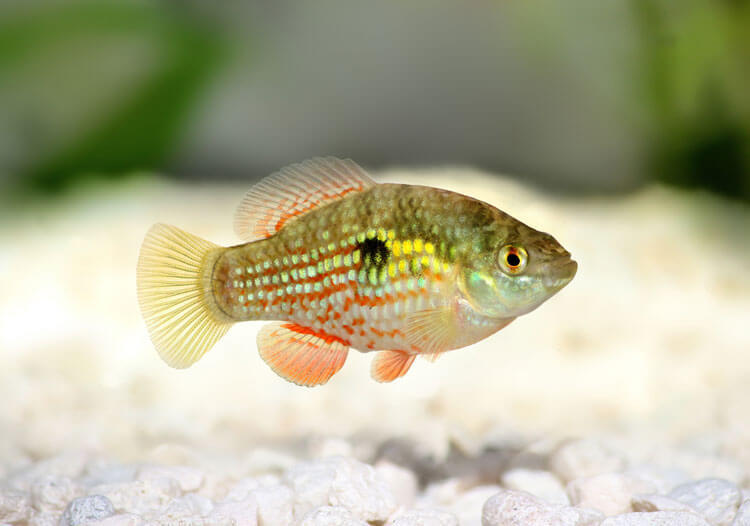 |
In Aphyosemion thw following should be considered "easy" and are routinely found in the pet trade: A. australe, A Striatum, any of the BIV fishes, A. gardeneri and the Blue Gularis F. sjostedti.
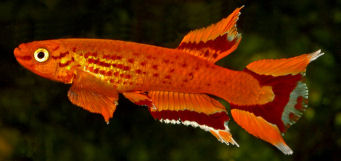 A. australe Orange 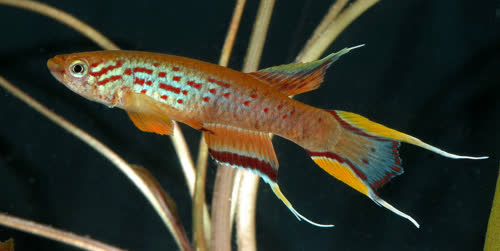 A. australeBrown (wild-type) |
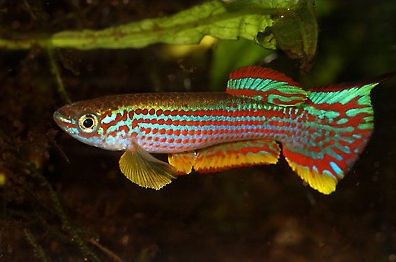 A. striatum 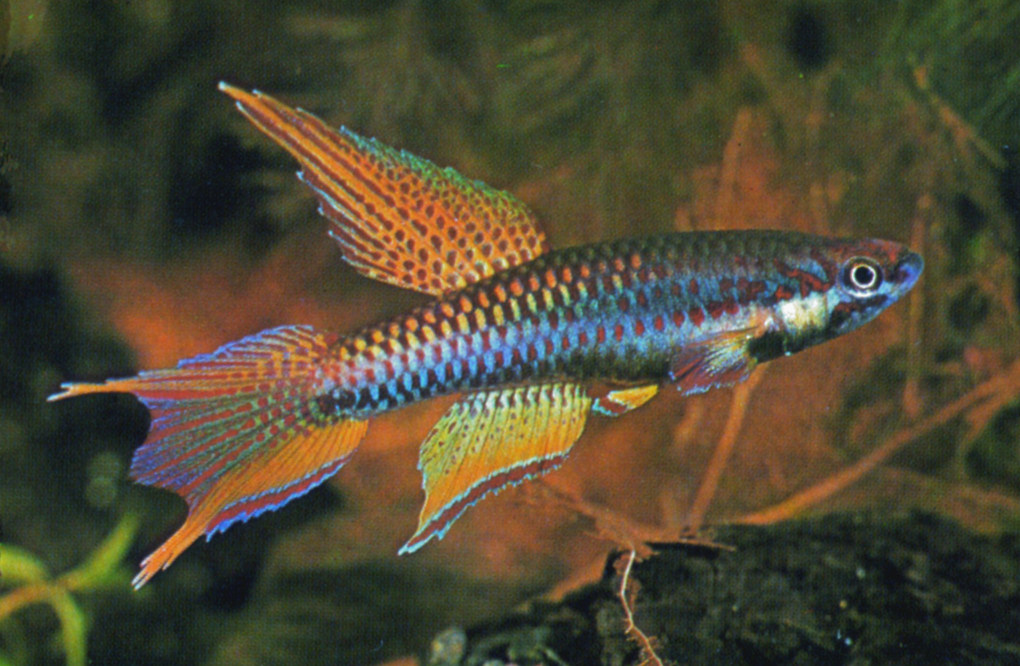 A. bitaeniatum |
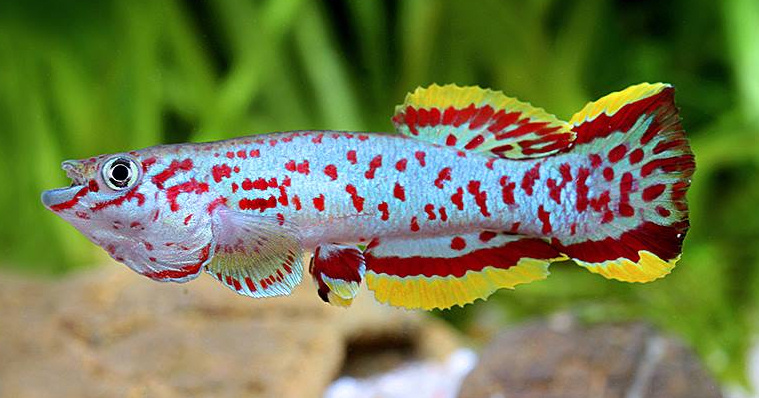 Fpx. gardneri 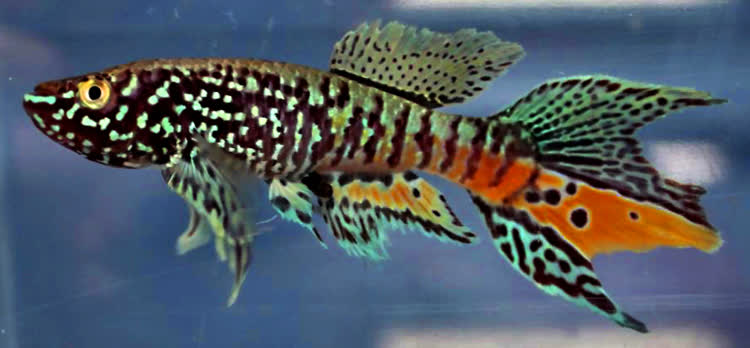 Blue Gularis |
These will all take frozen bloodworms (don't use flake, it's garbage) and bred easily in a well planted tank even if you have to set up a small 2 gal breeding tanks stuffed with cheap plants from the store like myriophyllum
 |
 |
The only ones I would suggest a beginner not start with is Nothobranchius or the South American annuals. Some of these are pretty picky about food and may only eat live food and: "annual means annual" - these are the ones that really do only life a year. I find Nothos easier than annuals, but Nothos get velvet like crazy. That being said some people do well with many at once, they just take more skill and attention os it's best to cut your teeth with the more common ones first i my opinion.
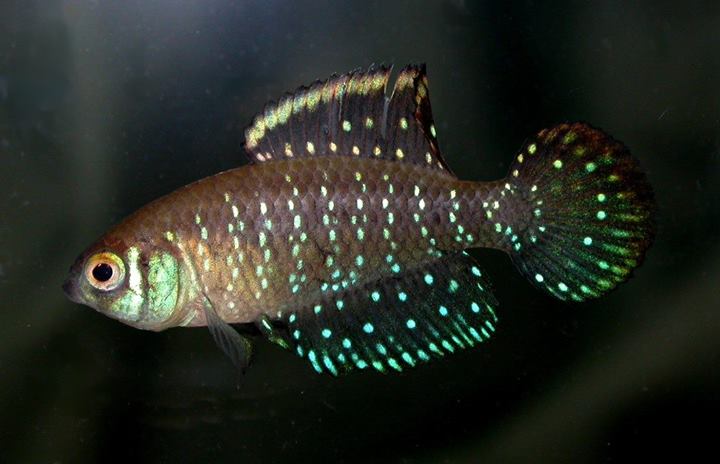 Austrolebias nigripinnis A South American Annual |
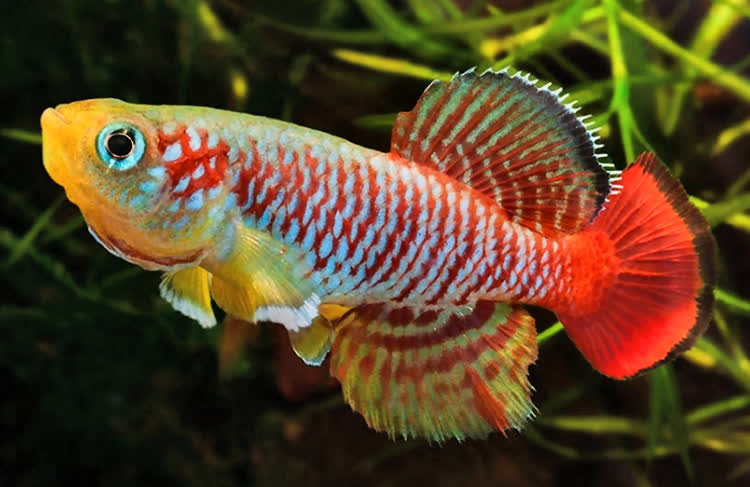 Nothobranchius guentheri Nothobranchius guentheri |
My first were gardneri Akure, back then some stores still used old incorrect names, twenty years corrected but the yellow ones were "calliurum ahli" while the blue ones were "calliurum calliurum".
 "A. calliurum calliurum" Now known as Fundulopanchax gardneri clauseni "blue" |
 "A. calliurum ahli" Now known as Fundulopanchax gardneri clauseni "yellow" |
Although the names were long sorted out by 1970, the incorrect names were used in at least one large popular aquarium book from Britain until at least the 1990s and most of the Innes books show a specimen of F. filamentosum in a photo that is supposed to be F. gardneri. | |
Of course the female jumped out, a nominal right of passage with your first pair of killies. Since this only takes 3 days usually, one could save time and presumably money by buying one fish, drying it out, THEN fitting a really really good tight fitting cover with NO GAPS WHATSOEVER (even a tiny one you could not think an ant could get through) and then another first pair of killies. It's difficult to explain to people who have not kept them how much they jump or just how bloody tiny the gaps are they can propel themselves though in their endless quest to become a 2D rug ornament. In the Innes book it's mentioned the author and a friend were importing some and had a large number in a tub. The cover was a half an inch short. By morning every single one had jumped out. I have seen glass covers cut with a triangular notch for a gap for airline tubing serve as a portal. Those gaps in the corner can get you if there is any free space, they'll jump out, it's best to cut there so under compression the hose deforms to a triangular shape completely sealing up the hole.
My second pair of killies were A. nigripinnis The only thing they would eat were live worms and they were fussy about which ones. Diapterons were easier I thought, at least they'd eat dead things. Austrolebias nigripinnis is supposed to be a "beginners" annual (although Nematolebias whitei is a far better choice) and Diapteron one of the more challenging killies but I personally did not find much difference. If anything Diapterons were easier.
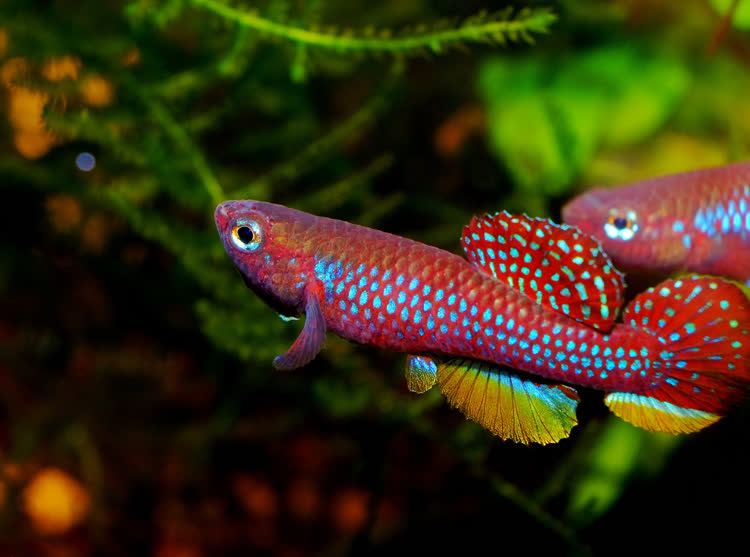 Aphyosemion (Diapteron) georgiae One of a handful of Diapteronspecies |
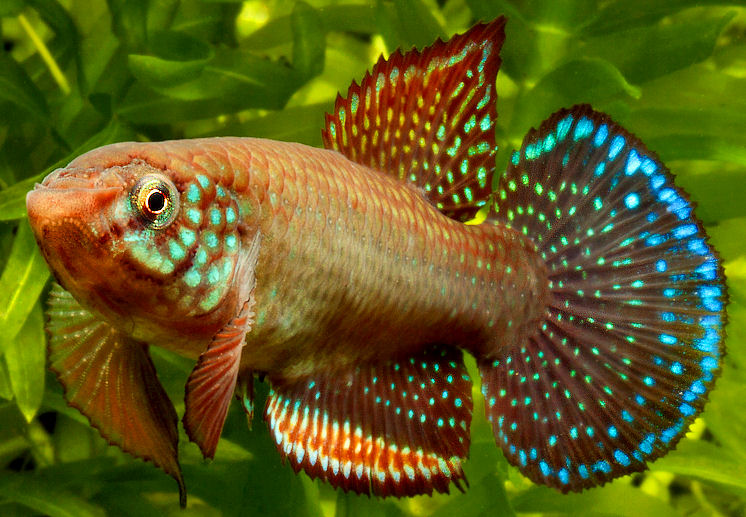 Nematolebias whitei |
Nothobranhois rachovii are of course a grail fish and few other fish have sold as much fish food as this one by being on the label, at one point, of nearly every fish food sold. Nothing gets velvet like those things - I've never seen any fish as susceptible to velvet as these. We have to be doing something wrong here. I know salt fixes/prevents this, but the thing is they're not from salty water! There's something else we are still missing! That being said, there are people today for whom this was their first killifish.
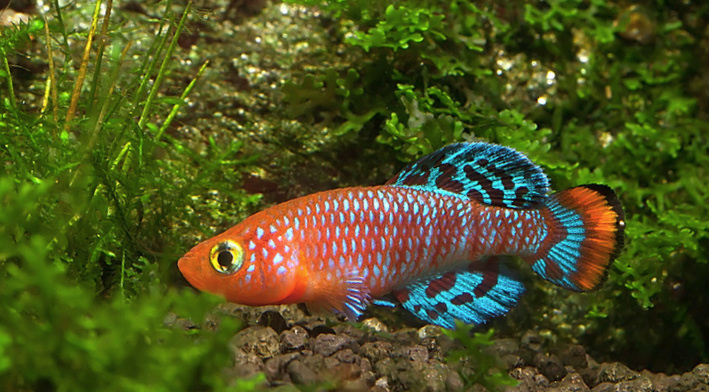 |
 ) ) |
 |
So the first killie question requires a bit of context. If you just want to throw some into a community tank then Aphyosemion if the fish are small, Fundulopanchax of they're medium sized and Aplocheilus lineatus if they're larger.
For a small 2 ot 5 gallon tank any of the smaller Aphyosemion species will be easily accommodated. They are really rather small fish, like a frilly Pencilfish but not as long.
Most do better by themselves. Sometimes the males get along, other times they're better in their own tank. Females should outnumber makes so a lone female isn't picked to death. The more individuals you start with the better chance the fussy ones will live together ok. Six pairs is not ridiculous but of course these things are not cheap and you can do it with one pair. This is one of the reasons eggs are so popular over live fish, it's a cheaper way to get a half a dozen, or at least a few pairs.